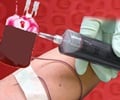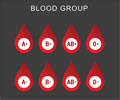
Blood comprises three main types of cells, erythrocytes (red blood cells), leukocytes (white blood cells), and thrombocytes (platelets), all of which arise from blood stem cells. While the origin of these cells is known, the gene expression changes that take place in the stem cell to dictate whether it becomes red cell, white cell, or platelet – or even develops a genetic mutation – are not yet fully understood.
To provide insight into this process, investigators analyzed more than 30 different specialized subtypes of white blood cells (including mast cells, T cells, monocytes, granulocytes, and B cells) and pinpointed the locations of key regions known as enhancers and promoters that determine if a particular gene will be active or silent in a cell. By identifying and mapping the locations of these regulators, investigators were able to correlate them with activity in specific genes.
"Until this point researchers could only recognize the unique signatures of enhancers and promoters; however, their exact location, as well as the association of specific enhancers to specific blood cells, remained unclear," said FANTOM5 Principal Investigator Alistair Forrest, PhD, of the RIKEN Centre for Life Science Technology in Yokohama, Japan. "This new, publicly available resource changes that, providing hematologists with a baseline reference for most blood cell types that allows them to trace the development of these cells and determine what may have occurred along the way to lead them to their final state."
With this new understanding of the location of enhancers and promoters used in each blood cell, investigators will now be better equipped to design experiments to determine how genes become activated, which could potentially lead to the development of strategies for turning off the gene to prevent or treat malignancies.
"The specific genetic alterations that are responsible for a normal cell turning into a cancer cell show up in the levels of messenger RNA in the cell, and these differences are often very subtle," said Dr. Forrest. "Now that we have these incredibly detailed pictures of each of these cell types, we can now work backwards to compare cancer cells to the cells they came from originally to better understand what may have triggered the cells to malfunction, so we will be better equipped to develop new and more effective therapies."
Advertisement
Source-Eurekalert











